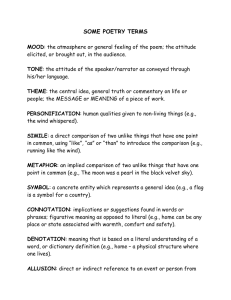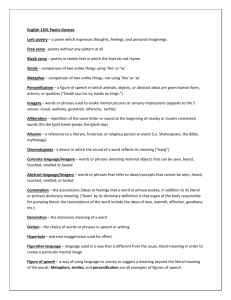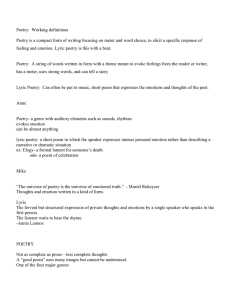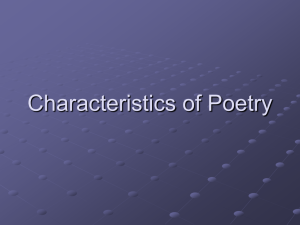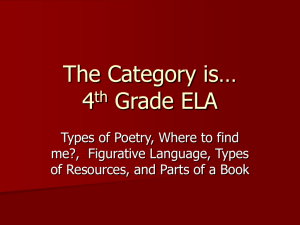Poetry Terms: Definitions & Examples
advertisement
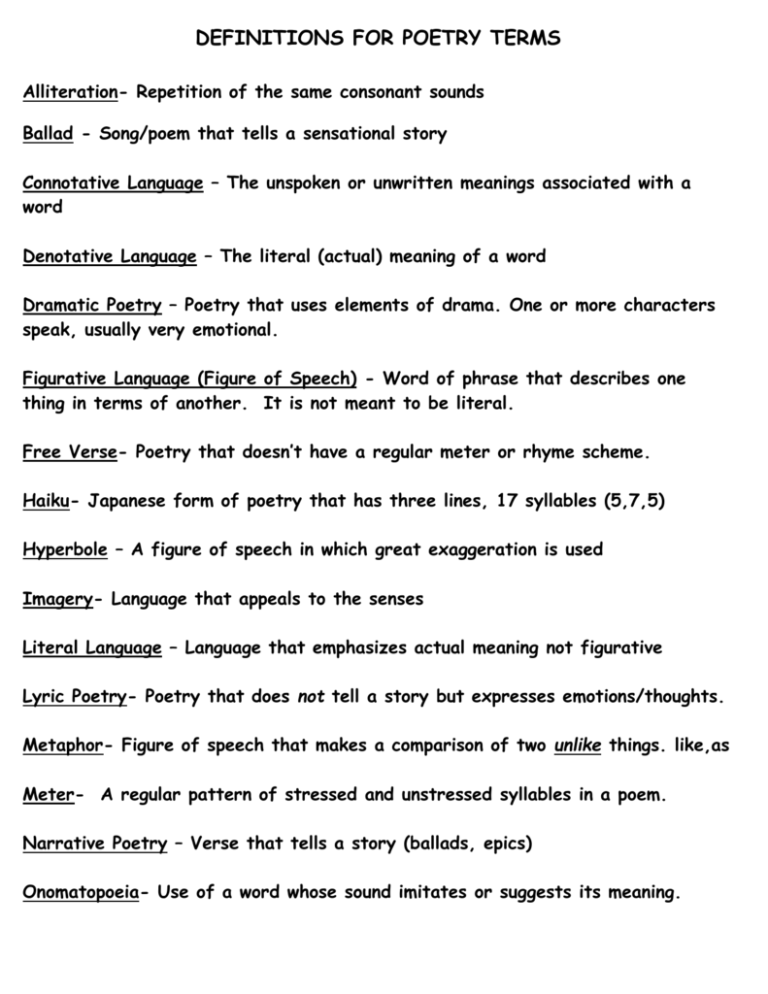
DEFINITIONS FOR POETRY TERMS Alliteration- Repetition of the same consonant sounds Ballad - Song/poem that tells a sensational story Connotative Language – The unspoken or unwritten meanings associated with a word Denotative Language – The literal (actual) meaning of a word Dramatic Poetry – Poetry that uses elements of drama. One or more characters speak, usually very emotional. Figurative Language (Figure of Speech) - Word of phrase that describes one thing in terms of another. It is not meant to be literal. Free Verse- Poetry that doesn’t have a regular meter or rhyme scheme. Haiku- Japanese form of poetry that has three lines, 17 syllables (5,7,5) Hyperbole – A figure of speech in which great exaggeration is used Imagery- Language that appeals to the senses Literal Language – Language that emphasizes actual meaning not figurative Lyric Poetry- Poetry that does not tell a story but expresses emotions/thoughts. Metaphor- Figure of speech that makes a comparison of two unlike things. like,as Meter- A regular pattern of stressed and unstressed syllables in a poem. Narrative Poetry – Verse that tells a story (ballads, epics) Onomatopoeia- Use of a word whose sound imitates or suggests its meaning. Oxymoron – A figure of speech that is a collection of contradictory words Personification- A special kind of metaphor (figure of speech) in which a nonhuman thing is given human qualities. Poet – Person who writes the poem. Poetry- A type of rhythmic compressed language that uses figures of speech to appeal to the reader’s emotions and imagination. Refrain- A repeated word, line, phrase, or group of lines Rhyme- Repetition of accented sounds in words that are close together Rhythm- The musical quality of language, created by meter and rhyme. Simile- Figure of speech that makes a comparison between two unlike things by using like or as. (x is like Y) Sonnet- 14 line lyric poem, written in iambic pentameter (Shakespearean sonnet is made of three, four line stanzas (quatrains) followed by a couplet. The rhyme scheme is abab cdcd efef gg) Speaker – The voice talking in the poem Stanza- Group of consecutive lines in a poem that form a unit Symbol- A person, place or thing that stands for itself, but also represents something beyond itself Tone- The attitude a writer takes about a subject Understatement – Language that makes something seem less important than it really is.
